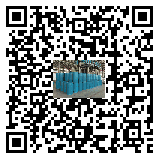Invisible Microscopic Commanders: How Digital Inkjet Dispersants Create a Colorful World
When we print high-definition photos on our home printers, when digitally printed T-shirts display intricate patterns,
or when the textures on ceramic tiles come alive, few realize that behind these dazzling visual effects lies a meticulously
orchestrated microscopic process—the work of digital inkjet dispersants. These seemingly insignificant chemical additives
act like invisible traffic controllers, ensuring that pigment particles line up neatly within the ink, ultimately resulting in
stable and vibrant colors.
I. Maintaining Order in the Microscopic World
In digital inkjet technology, the core components of ink are pigments or functional particles, typically measuring only tens
to hundreds of nanometers in diameter—smaller than one-thousandth the thickness of a human hair. These tiny particles
have a natural tendency to form clusters. Due to the intermolecular van der Waals forces, they easily attract each other and
aggregate to form larger particles, much like pedestrians in a crowd naturally tend to move closer together. However, in
inkjet systems, this "clustering" behavior can have serious consequences: at best, it can cause uneven printing colors; at
worst, it can clog the tiny printhead aperture (typically measuring just tens of microns), leading to equipment failure.
The primary task of dispersants is to prevent this agglomeration. They maintain the dispersion of particles through two
sophisticated mechanisms: the double layer effect and the steric effect. Like a charged "armor" for the particles, anionic
dispersants form a charge layer on the particle surface, ensuring that each particle has the same charge. This distance is
maintained by the principle of "like charges repel" (like charges repel). The effectiveness of this charge barrier can be
measured by the zeta potential, which typically needs to be maintained above 40mV to ensure stability. Polymeric
dispersants, on the other hand, act like a "spacer" around the particles. One end of their molecules firmly adheres to
the particle surface, while the other end extends to form a three-dimensional protective layer. When particles
approach, these extended molecular chains repel each other, preventing aggregation.
These two mechanisms often work synergistically to create a stable dispersion system. Excellent dispersants can
control the average particle size of pigments to around 100nm, ensuring that inks can be stored for over 12 months
without sedimentation or stratification. This is like ensuring that the "inhabitants" of the microscopic world maintain
social distance and a dynamic equilibrium.
II. A versatile agent with cross-disciplinary applications
In different digital inkjet applications, dispersants must adapt their "tactics" to specific environments, demonstrating
remarkable adaptability. In textile digital printing, water-based inks face interference from calcium and magnesium
ions in hard water. These ions disrupt the charge balance, acting like a "conductor" between charged particles. This
is where non-ionic dispersants come in. The protective layer they form through hydration is independent of charge
and effectively resists hard water interference, ensuring uniform pigmentation on the fabric while also improving the
washability of the design.
Ceramic inkjet printing presents another challenging field. Ceramic inks must remain stable before high-temperature
sintering, yet must not leave any residue during the sintering process that could affect the ceramic's performance.
This requires dispersants to act like "temporary commanders," effectively maintaining the dispersion of ceramic
powders during the printing phase and reducing slurry viscosity for smooth inkjet printing. Furthermore, when the
kiln temperature rises above 600°C, they must completely evaporate, without interfering with the physical and chemical
properties of the ceramic. Dispersants that work through steric hindrance are particularly well-suited to this requirement.
They can achieve uniform dispersion of particles in high-viscosity systems, ensuring that the printed pattern remains
clear and precise after sintering.
Food packaging printing places stringent safety requirements. Inkjet inks for food contact materials must meet
environmental standards. Dispersants, as key components, must be low-toxic and free of hazardous volatiles. New
environmentally friendly dispersants are free of harmful substances such as APEOs. By optimizing their molecular
structure, they achieve efficient dispersion while reducing volatile organic compound (VOC) emissions, safeguarding
both print quality and food safety.
In cutting-edge functional inkjet applications, such as conductive inks and 3D printing materials, dispersants play
an even more critical role. They ensure uniform distribution of metal nanoparticles or functional ceramic powders
in the ink, ensuring stable conductivity or structural strength in the printed film. This is like laying a "uniform
road network" at the microscopic scale, providing a foundational guarantee for the performance of functional
materials.
III. Future-Oriented Innovation
As digital inkjet technology advances toward high precision and multifunctionality, dispersants are also evolving.
Modern dispersants have evolved from single-function to multifunctional composites. Some specialized dispersants
can simultaneously meet low-temperature and scrub resistance requirements. Even at temperatures as low as -20°C,
they will not crystallize and clog printheads, making them particularly suitable for applications in extreme
environments such as outdoor advertising.
Environmental performance has become a key development trend. Some traditional dispersants suffer from
dark color, high toxicity, or high-temperature residue. New dispersants overcome these drawbacks through
molecular design. For example, the introduction of sulfonate monomers to polycarboxylates maintains a light
appearance while significantly improving high-temperature resistance. They also offer low foaming and are
non-toxic, meeting the requirements of green production.
Precision control is another major breakthrough. Using advanced technologies such as controlled free radical
polymerization, scientists can precisely design the molecular structure of dispersants to achieve targeted
dispersion of specific pigments. This customized dispersant can control pigment particle size below 60nm
while maintaining ink viscosity within 60mPa·s, enabling ultra-high-precision printing. As inkjet technology
penetrates more fields, dispersants will continue to evolve, creating even more exciting chapters in the
microscopic world.
From home printing to industrial manufacturing, from everyday apparel to high-end ceramics, digital inkjet
dispersants are like invisible magicians, silently working in the invisible microscopic world. While they don't
directly render color, they ensure that each color blooms perfectly. While not involved in the final product,
they provide the foundation for high-quality inkjet technology. It is this scientific power behind brilliant
colors that allows digital inkjet technology to continuously push boundaries and add more colorful
possibilities to our lives.


